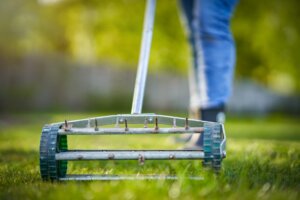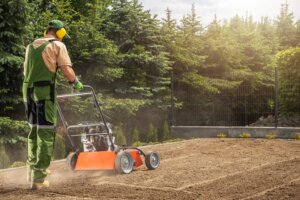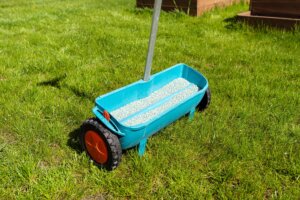Fertilizing your garden is like giving your growing plants a balanced meal packed with key nutrients. The right lawn fertilizers provide essential elements like nitrogen and enough calcium that many soils naturally lack, but applying too much can do more harm than good.
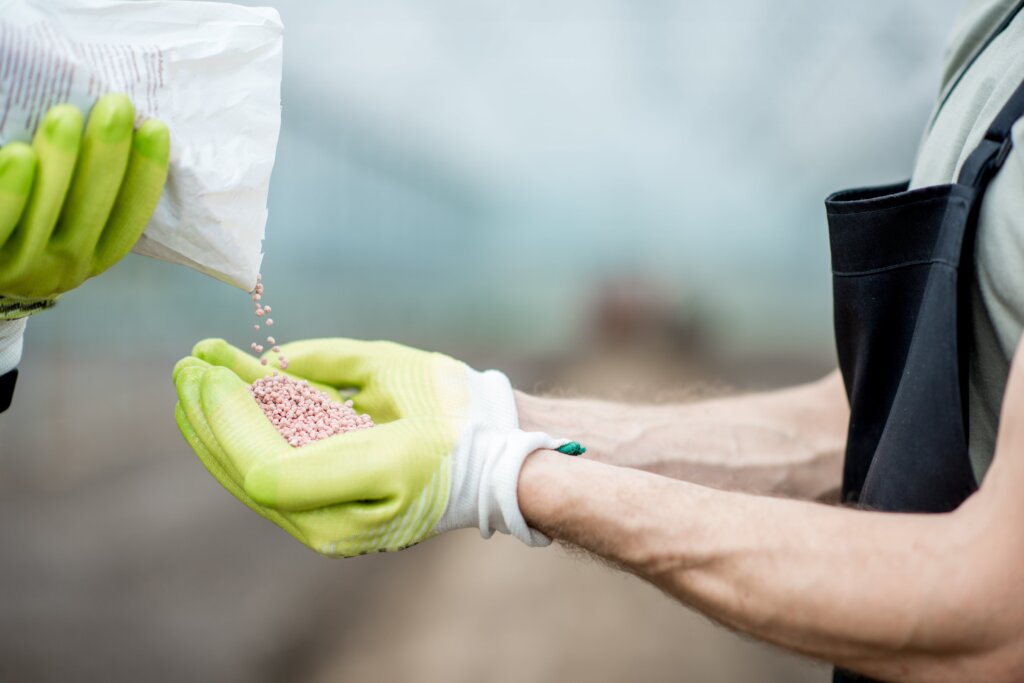
With the right approach (and sometimes less fertilizer), your garden and lawn can thrive beautifully. For expert help in creating a healthier outdoor space, visit Terra Lawn Care.
Key Takeaways
- Test your soil first: A soil test helps identify pH and nutrient levels so you can apply only what your garden soil really needs.
- Match fertilizer type to your goals: Use organic fertilizers for steady, long-term nutrition or inorganic fertilizers for quick results.
- Don’t overdo it: Too much fertilizer, especially nitrogen, can harm plant roots and upset soil balance.
- Feed at the roots: Apply fertilizer at the root zone so plants absorb beneficial nutrients efficiently.
- Follow timing and method guidelines: Apply during the active growing season and adjust based on soil type and plant needs for the best results.
General Guidelines for Fertilizing
Before applying fertilizer, it’s important to understand its role in providing nutrients to your plants. According to the University of Massachusetts Amherst, proper fertilizer storage and handling help keep nutrients like nitrogen, phosphorus, and potassium (N-P-K) in a usable form for healthy growth.
- Nitrogen (N): Promotes leafy growth and vibrant green color, essential for lawns and leafy vegetables.
- Phosphorus (P): Supports strong root development and helps with flowering and fruiting.
- Potassium (K): Boosts overall plant health and improves resistance to drought and disease.
Use the right type and amount: Applying the correct balance of organic or inorganic fertilizers ensures your soil delivers nutrients efficiently without the risk of over-fertilizing.
Conduct a Soil Test First
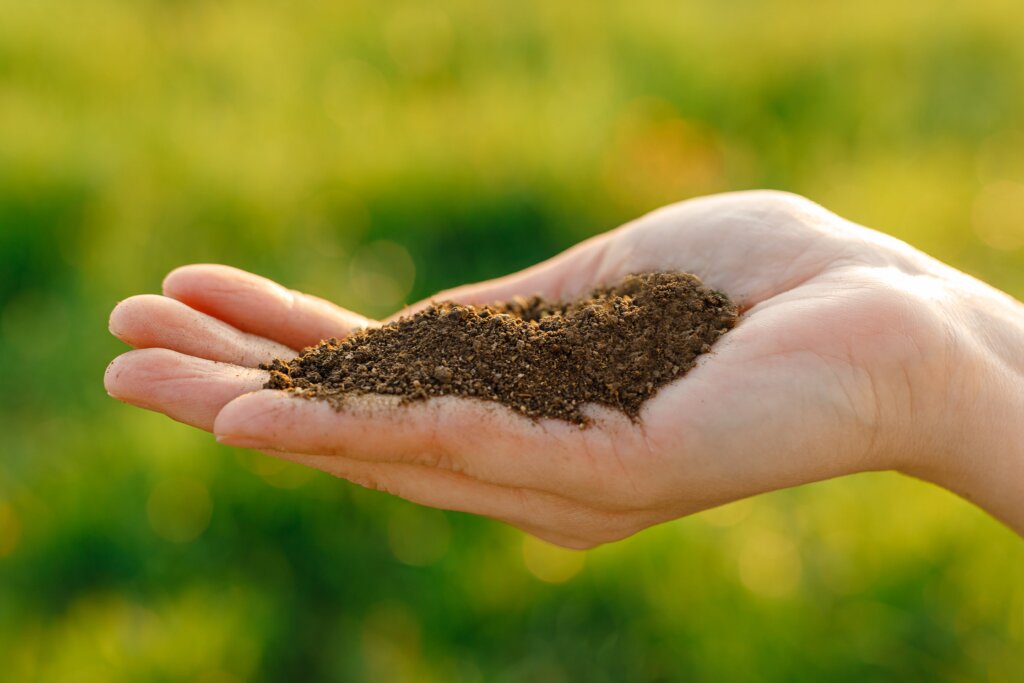
Before adding nutrients, perform a soil test to determine your soil pH, nutrient levels, and deficiencies. Results will guide which fertilizers and fertilizer mix to use. For clay soils, consider amendments that improve water holding capacity; for sandy soils, focus on nutrients that don’t leach quickly.
A soil test ensures you apply only what’s needed, preventing too much fertilizer and saving money. For more details on assessing soil, see our guide on How to Fertilize a Lawn.
Types of Fertilizers: Organic vs. Inorganic
Choosing the right fertilizer depends on how fast you want results and how you care for your soil and growing plants.
| Organic Fertilizers | Inorganic Fertilizers |
|---|---|
| Made from natural materials like compost, fresh manure, blood meal, fish emulsion, and compost tea. | Chemically produced and water-soluble for quick nutrient release. |
| Improve soil organic matter and support long-term healthy plant growth. | Provide fast results, but can cause issues if too much nitrogen is applied. |
| Best for vegetable gardens, fruit trees, and acid-loving plants. | Ideal for established lawns needing instant greening or targeted nutrient boosts. |
Both fertilizer types can be effective; it’s all about applying the right kind at the right time for balanced growth across your entire garden. Check if you’re within Terra Lawn Care’s service area to get expert fertilization guidance tailored to your local soil and climate.
How to Apply Fertilizer
Applying fertilizer correctly is essential for the health of your garden and the strength of your plant roots. Whether you’re using organic fertilizers like compost or inorganic fertilizers with higher nitrogen content, the method of application plays a key role in how well your plants absorb nutrients.
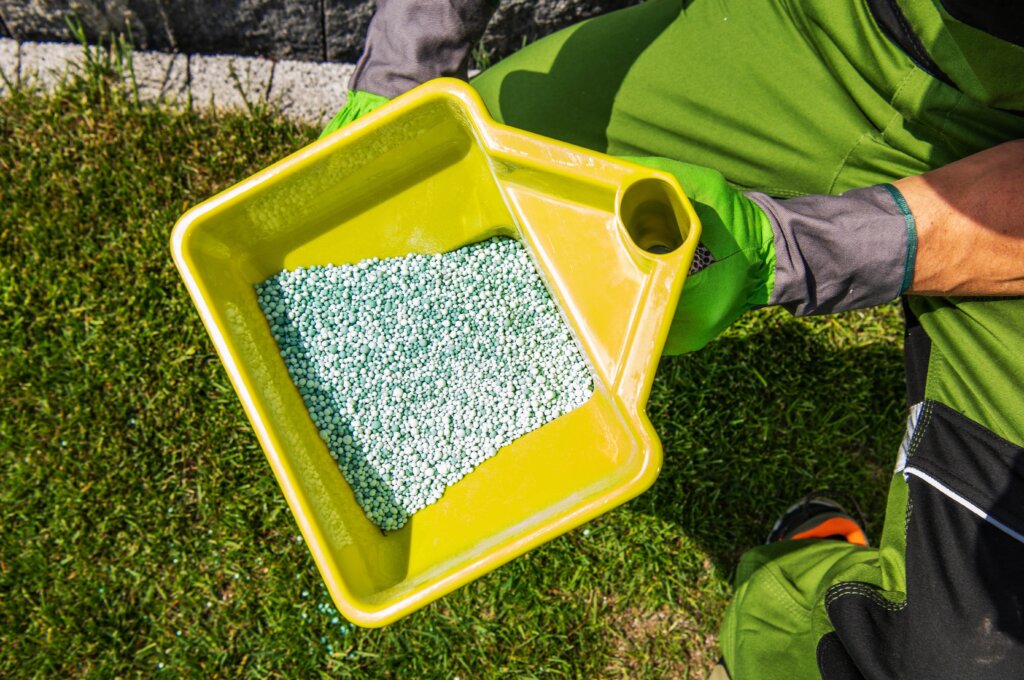
For Your Lawn
- Granular Fertilizers: Use a spreader to evenly distribute fertilizer across your lawn, about 1 pound per 100 square feet. This helps prevent too much nitrogen buildup, which can burn grass and upset your soil pH. After spreading, lightly water to help nutrients soak into the soil.
- Liquid Fertilizers: Apply with a sprayer or watering can, ensuring even coverage across the entire lawn. Liquid options work fast, especially in sandy soils where nutrients can leach quickly.
For Your Vegetable Garden
- Granular Application: Gently work the fertilizer into the garden soil or side-dress along the rows to maintain a steady release of other nutrients like potassium. For home gardeners using organic matter or compost, mixing it directly into the soil can improve texture and nutrient retention.
- Liquid Application: For a quick nutrient boost, apply liquid fertilizer directly to the base of vegetables so the roots can absorb nutrients efficiently. Liquid organic fertilizers made from a compost pile or fish emulsion are great for encouraging healthy, productive growth.
Correct fertilizing ensures your garden stays balanced, neither too rich in nitrogen nor too depleted in key nutrients. For Pennsylvania homeowners, our How to Apply Lawn Fertilizer guide offers step-by-step instructions tailored to local soil and weather conditions.
Choosing the Right Fertilizer Mix
A proper fertilizer mix balances N-P-K ratios to meet your plants’ nutrient needs. Use slow-release fertilizers for steady growth or water-soluble types for fast nutrient uptake. Here’s how to choose the best option for your individual plants or entire garden:
Blood Meal
A rich nitrogen boost is ideal for acid-loving plants and early in the growing season when strong leaf development is needed.
Fish Emulsion
A gentle NPK source perfect for vegetable gardens and leafy plants, helping sustain healthy plant growth without overfertilizing.
Compost Tea
Enhances soil enrichment naturally, promoting disease resistance and improving the root zone for better nutrient absorption.
Ammonium Sulfate
Delivers a quick nitrogen source for lawns and effective grass clippings management, providing fast greening when your yard needs a boost.
Learn more about detailed application methods in our article about Methods of Fertilizer Application.
Fertilizing Tips for a Vigorous PA Garden
Follow these quick tips to keep your PA garden healthy and your soil nutrient-rich year-round:
| Tip | Benefit |
|---|---|
| Leave grass clippings on the lawn | Naturally recycles key nutrients back into the soil. |
| Avoid too much fertilizer | Prevents stunted growth and nutrient runoff into waterways. |
| Add organic matter like compost or fresh manure | Improves soil structure and supports healthy plant growth. |
| Check leaf tissue regularly | Helps detect nutrient deficiencies or excesses early. |
| Maintain a low pH for acid-loving plants | Ensures optimal nutrient uptake and strong root development. |
Small, consistent steps like these help growing plants flourish while keeping your entire garden balanced. For professional help, explore Terra Lawn Care’s fertilization services and give your lawn the expert care it deserves.
Timing: When to Fertilize
- Early Spring: Kickstart plant growth after dormancy.
- Growing Season: Apply slow-release fertilizers for vigorous plant growth.
- Blooming Season: Support flowering plants and fruit production.
For PA-specific fertilization schedules, see our blog on When to Apply Starter Fertilizer.
Grow a Healthier Garden with Terra Lawn Care Specialists
Since 2003, Terra Lawn Care Specialists has helped homeowners grow vibrant lawns and gardens across PA, NJ, and DE. From acid-loving plants to lush turf, our team, backed by 50+ years of combined experience and led by an in-house agronomist, uses the right mix of inorganic fertilizers, grass clippings, and soil care to keep roots strong all growing season long.
Every project is handled by our state-certified professionals, ensuring expert results every time. Contact Terra Lawn Care to give your garden the care it deserves.
Frequently Asked Questions About How to Use Fertilizer
The best way to apply fertilizer depends on your garden type and soil condition. For lawns, use a drop spreader to ensure even coverage across every square foot.
In garden beds, gently mix fertilizer into the garden soil near the plant roots to help them absorb beneficial nutrients more effectively. Always base your method on recent soil test results to avoid over-application of nutrients like phosphorus or potassium.
You can, but it’s not the most effective way. Sprinkling fertilizer on top of garden soil may lead to nutrient loss, especially if it’s windy or rains soon after.
Instead, lightly work it into the top few inches of soil or water it in to help water-soluble nutrients reach the plant roots. For vegetables, this ensures consistent feeding throughout the growing season.
Fertilizer is best applied early in the growing season, when plants start producing new leaves and roots. Applying it at this stage helps vegetables and other plants make full use of the nutrients in the soil.
Many fertilizers come with recommended schedules, but checking soil test results helps determine the right timing and nutrient balance for your garden.
Water your garden or lawn right after fertilizing, ideally within a few hours. This helps move the nutrients into the soil, making them available to plant roots.
For granular fertilizers, watering prevents fertilizer burn, while water-soluble products dissolve quickly and deliver beneficial nutrients faster. Just be cautious not to overwater, as that can wash away organic matter and nutrients, or spread weed seeds.

